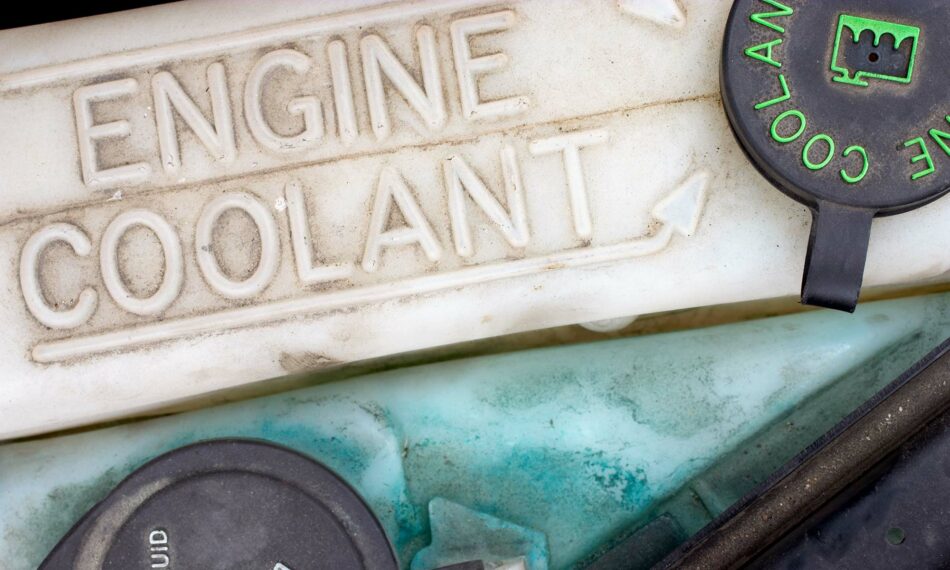Get this deal! Call now.
Speak with a vehicle protection plan specialist and get $300 off any new contract instantly.
Call 866-678-4172
Drivers across the country are finding plenty of ways to enjoy themselves before the winter weather comes along. While you can prepare for cooler temperatures at fall activities like football tailgates, prepping your vehicle for the colder weather may be overlooked.
As the temperature drops, staying warm during your daily commute or weekend road trips is a must for both you and your passengers. But, before you can identify the common causes of your vehicle’s heating not working, it’s worth learning how a car’s heating system works.
While they may seem like polar opposites, your vehicle’s heating system is actually integrated with the cooling system. However, while your heating system helps to keep you warm inside the cabin, your cooling system works to keep your engine from overheating. To do this, your cooling system uses a chemical fluid known as coolant to maintain the optimal temperature for your engine when in use.
In fact, the warm air that you feel coming from your car’s air conditioning system results from the engine coolant doing its job correctly. That’s because as the coolant runs through your engine block, it extracts the excess heat before carrying it to the radiator. Here, the radiator helps to dissipate the captured heat from the coolant before it returns to the engine block. The process is then repeated to constantly maintain the ideal operating temperature in your engine. However, before being cooled, the heated coolant passes through a component called a heater core.
Essentially a smaller radiator used in your cooling system, the heater core is the most critical component of your heating system. The heater core looks and acts similarly to a radiator, just on a smaller scale. The heater core also uses the same basic functions to extract heat as your radiator. Once in the heating core, a blower motor pushes the warm air through into your vents — helping to keep you and your passengers warm in the vehicle’s cabin.
Despite being integrated with your cooling system that constantly runs to prevent our engine from overheating when in use, your vehicle’s heater is often only used during the winter or fall months when the temperature drops. Your heating system also has fewer components than your cooling system, meaning fewer chances for a potential malfunction or other mechanical issues. However, while this makes your heating system relatively easy to maintain, the lack of regular use means finding out that your heater doesn’t work usually happens when it’s needed the most.
While the most obvious way to detect that your heating system is broken is a lack of heat from your vents, there are a few more examples that you should be aware of.
A few common examples are:
If you notice any of the symptoms above, it is best to have your vehicle inspected by a licensed auto repair shop or ASE Certified mechanic.
Protect yourself from the cost of unexpected heating and cooling system troubles with a vehicle protection plan like EnduranceAdvantage™. Along with providing the most comprehensive breakdown protection available, each EnduranceAdvantage protection plan also comes with up to $3,500 in regular maintenance coverage to help keep your vehicle running for longer. You can also receive special, one-time services like cooling system maintenance at no additional cost.
When your vehicle’s heating system is malfunctioning, a few different problems could be the cause.
Some of the more common causes are:

Often, a vehicle’s heating system is not working due to low coolant levels. Just as your engine needs enough gasoline to run, your heating system is the same with coolant.
To check your coolant levels, find your vehicle’s coolant expansion tank in your engine bay. If you are unsure of where the expansion tank is located in your vehicle, your owner’s manual should be able to help you. Once found, simply refill it with the recommended amount of coolant per your manufacturer and check for proper heating system function.
If your heating still does not work or if you notice you are refilling coolant too often, you may have a leak somewhere in the system. Bring your vehicle to your nearest auto repair facility as soon as possible to avoid potential damage to your engine.
The radiator on your vehicle is vital to your cooling and heating system. It is the sole component that extracts heat from the coolant in your system to help avoid overheating in your engine. When damaged or clogged, your radiator can reduce and even prevent coolant from passing through. This can cause restricted coolant flow, leaving your heating system without enough coolant to function correctly.
Diagnosing a clogged or damaged radiator can be tricky, depending on the make/model of your vehicle. If you suspect that your radiator is the culprit, it is best to have it inspected by a certified technician.
The heater core on a vehicle is usually located in the HVAC box stored behind the dashboard. These can be very difficult to get to, so diagnosing any issues with your heater core is best left to the experts.
Symptoms of a damaged or malfunctioning heater core include coolant dripping onto your passenger-side floorboard, a sweet smell coming from your vents, and a non-working heater.
A blend door actuator is essentially a small electric motor that diverts air in your car’s HVAC box. This process can be seen in action when you switch your A/C vents from blowing from the top vents to the bottom vents or the windshield defroster as your blend door actuator redirects the air that comes out of your vents.
Over time, these blend doors can become stuck or damaged, leaving you with air that only blows out of certain vents. While this is a reasonably easy problem to diagnose, you will need a certified mechanic to fix it.
Electrical issues can also cause your heating system not to work. Since most of your vehicle’s components run off of some type of sensor or electrical component, it is no surprise that a malfunctioning heater can be traced back to electrical issues.
Your vehicle’s heating system is a must-have for the colder days ahead. By recognizing the signs of potential issues with your heating system, you can be sure you’re not left in the cold this fall and winter. A vehicle protection plan from Endurance can also give you peace of mind when it comes to protecting your vehicle from expected breakdowns and costly repair bills.
Along with covering your vehicle’s most vital components, each Endurance plan also comes with a year of Elite Benefits for FREE! That means you can rest easy knowing you have access to perks such as 24/7 roadside assistance, tire repairs/replacements, and more without additional out-of-pocket expenses.
For more information about any Endurance protection plan, including EnduranceAdvantage, request a free, no-obligation quote or give us a call at (800) 253-8203. You can also find other informative articles on topics like DIY maintenance tips, vehicle comparisons, auto expert reviews, and more by visiting the Learning Center.

It’s no surprise to anyone who’s been car shopping recently that automobiles are expensive. The average new car costs $48,000, while the typical pre-owned car costs about $25,600. These are..

The arrival of spring signals a time for renewal, fresh starts, and new projects. One effort to add to your task list is getting your car in shape after winter...

Winter driving can be tough on your car and its components. Subzero temperatures and inclement weather push vehicles to their limits, so when spring rolls around, it couldn’t be a..

Your protection is our top priority. Your quote is in progress and you will
receive a confirmation
email shortly.

We're here to make sure you get the most comprehensive EV protection. That's why we've partnered with Xcelerate Auto to offer you transparent and dependable Tesla coverage.
Want us to contact you about XCare coverage for your Tesla?



Sign up and get $300 off your new contract!
By clicking the button, you consent to Endurance using automated technology to call, email, and text you using the contact info above, including your wireless number, if provided, regarding auto protection or, in California, mechanical breakdown insurance. You also agree to the Endurance Privacy Policy and Terms and Conditions. Consent is not a condition of purchase, and you can withdraw consent at any time. Message and data rates may apply.
Speak with a vehicle protection plan specialist and get $300 off any new contract instantly.
Call 866-678-4172

Simply fill out the information below and we will follow up fast with your free no-obligation quote.
By clicking the button, you consent to Endurance using automated technology to call, email, and text you using the contact info above, including your wireless number, if provided, regarding auto protection or, in California, mechanical breakdown insurance. You also agree to the Endurance Privacy Policy and Terms and Conditions. Consent is not a condition of purchase, and you can withdraw consent at any time. Message and data rates may apply.
Larry Witherspoon Jr. is a co-founder and Executive Director of the Automotive Training Center. Larry has held multiple leadership positions in the U. S. Navy and with various Fortune 100 companies. In addition to his business experience, Larry grew up understanding the difficulties all young men face becoming adults especially those that come from challenging circumstances. He has taken those experiences growing up and combined them with his passion for vehicles to start the Automotive Training Center. Read more about Larry.